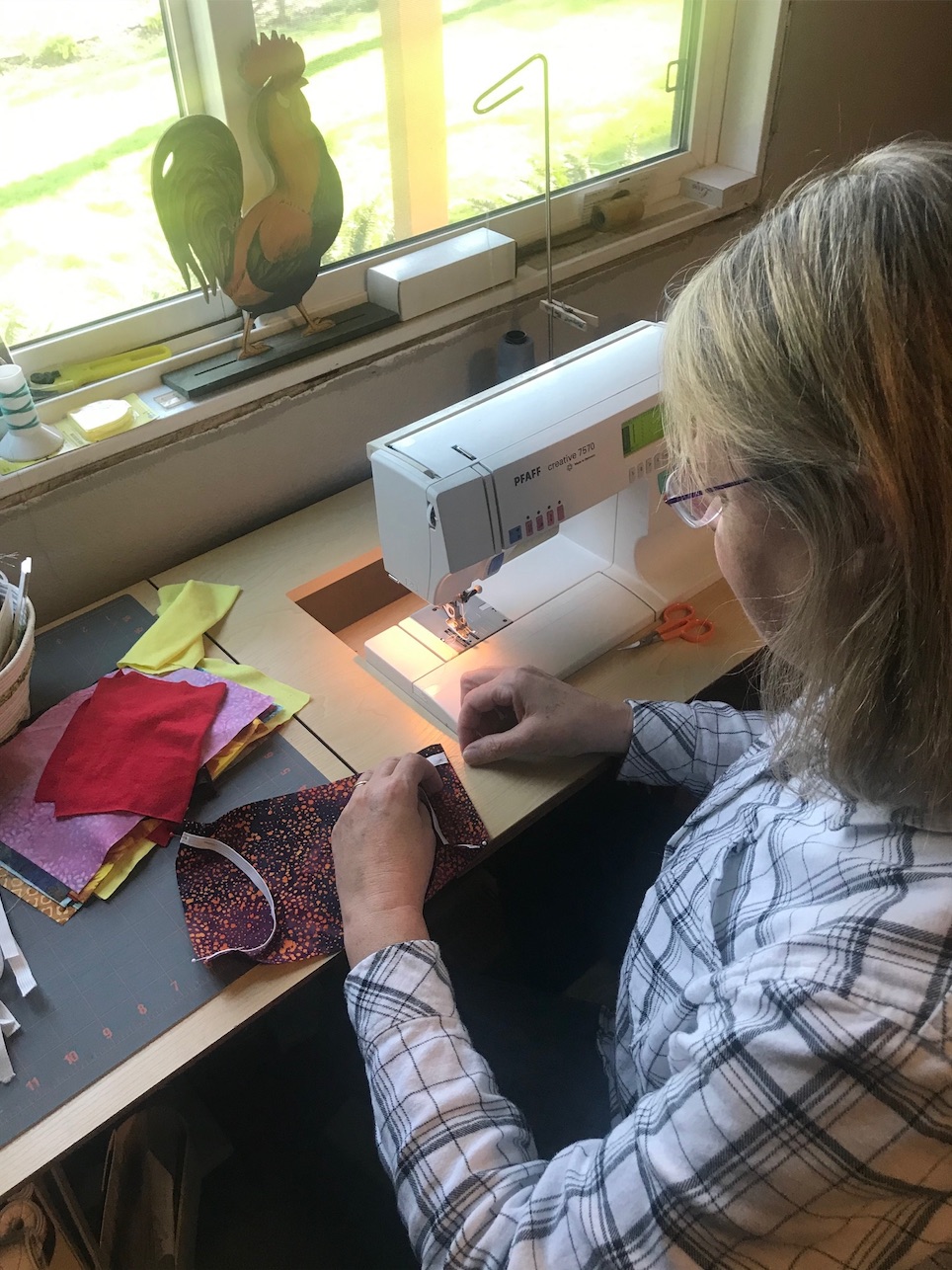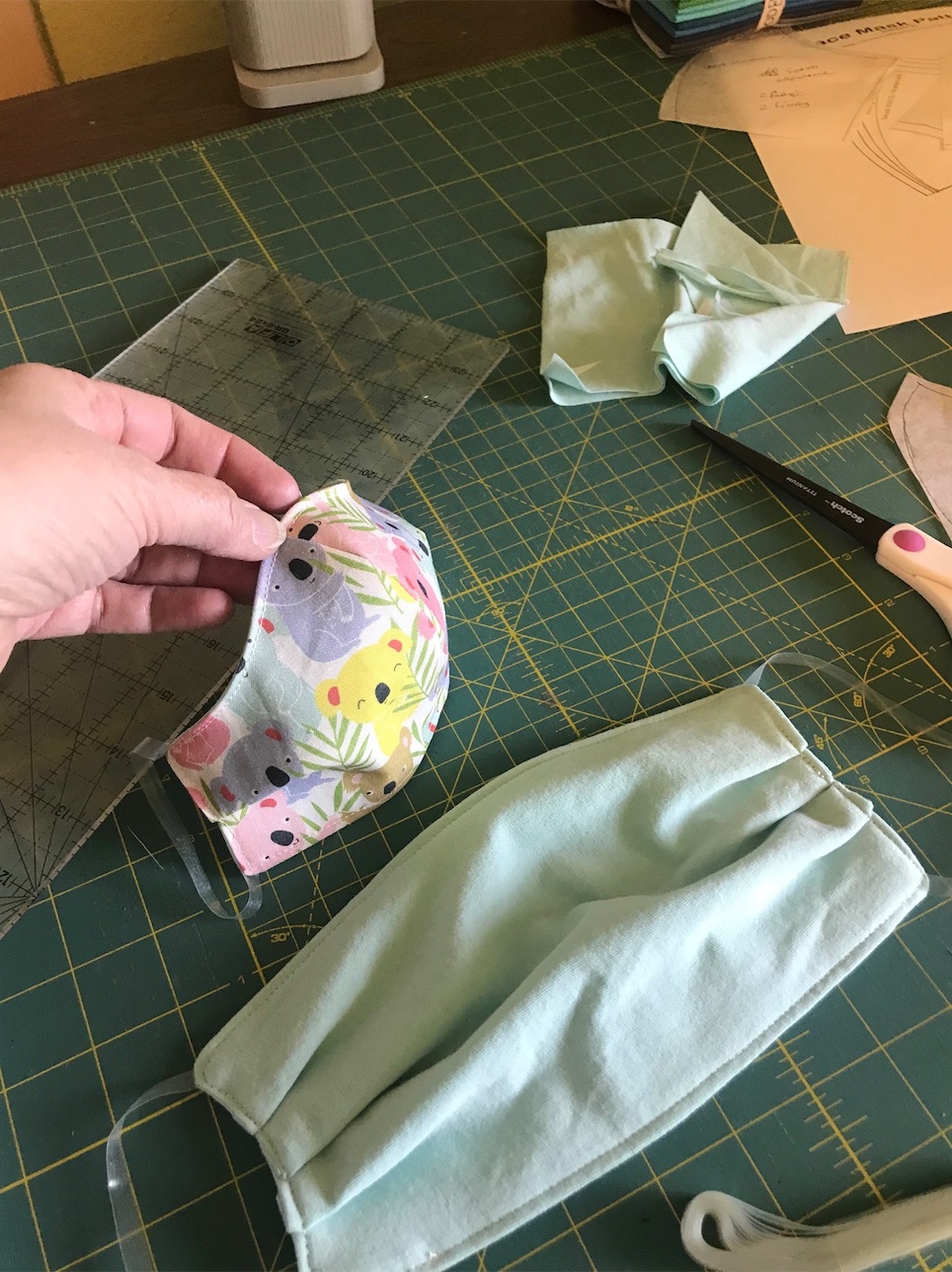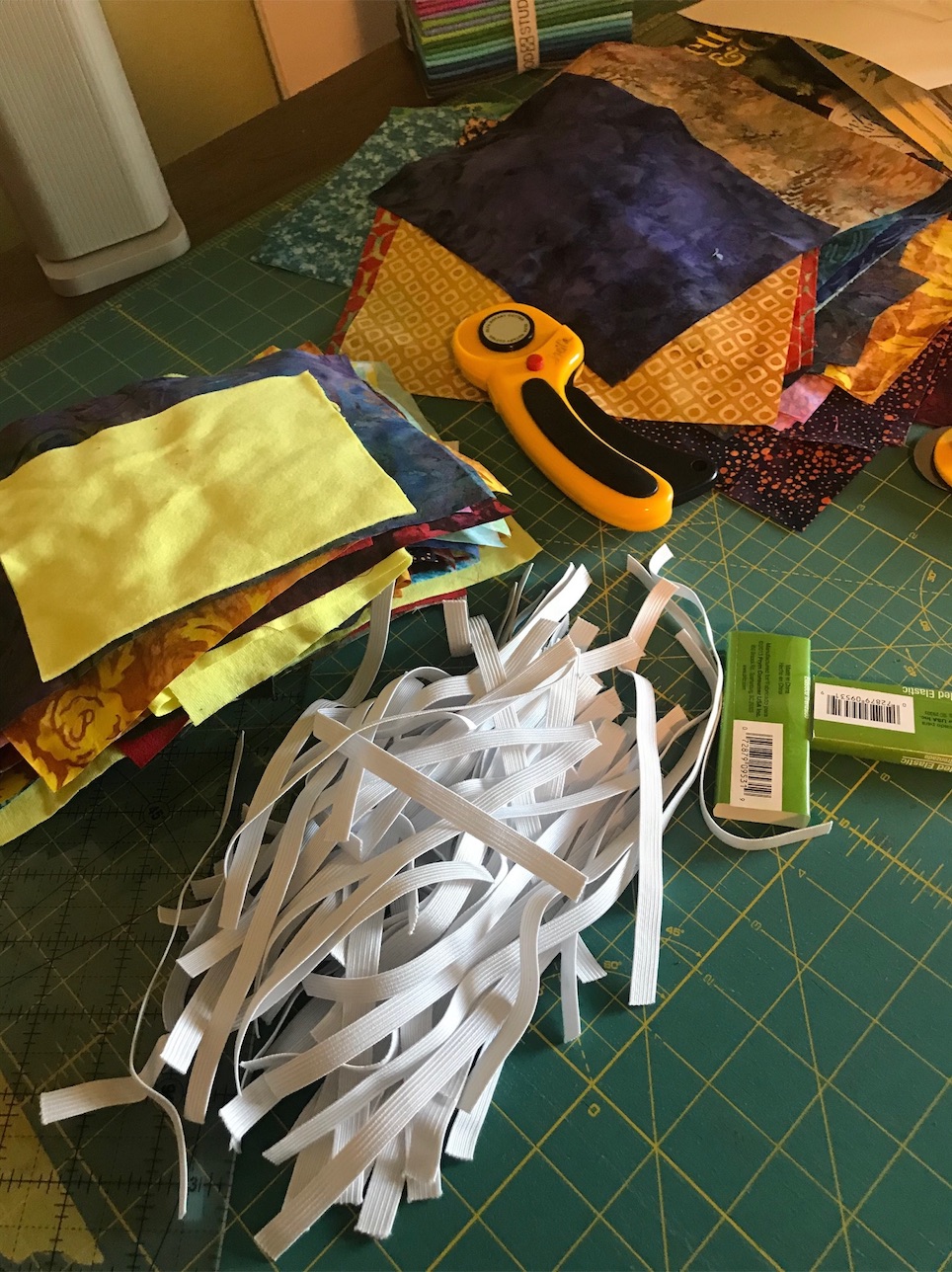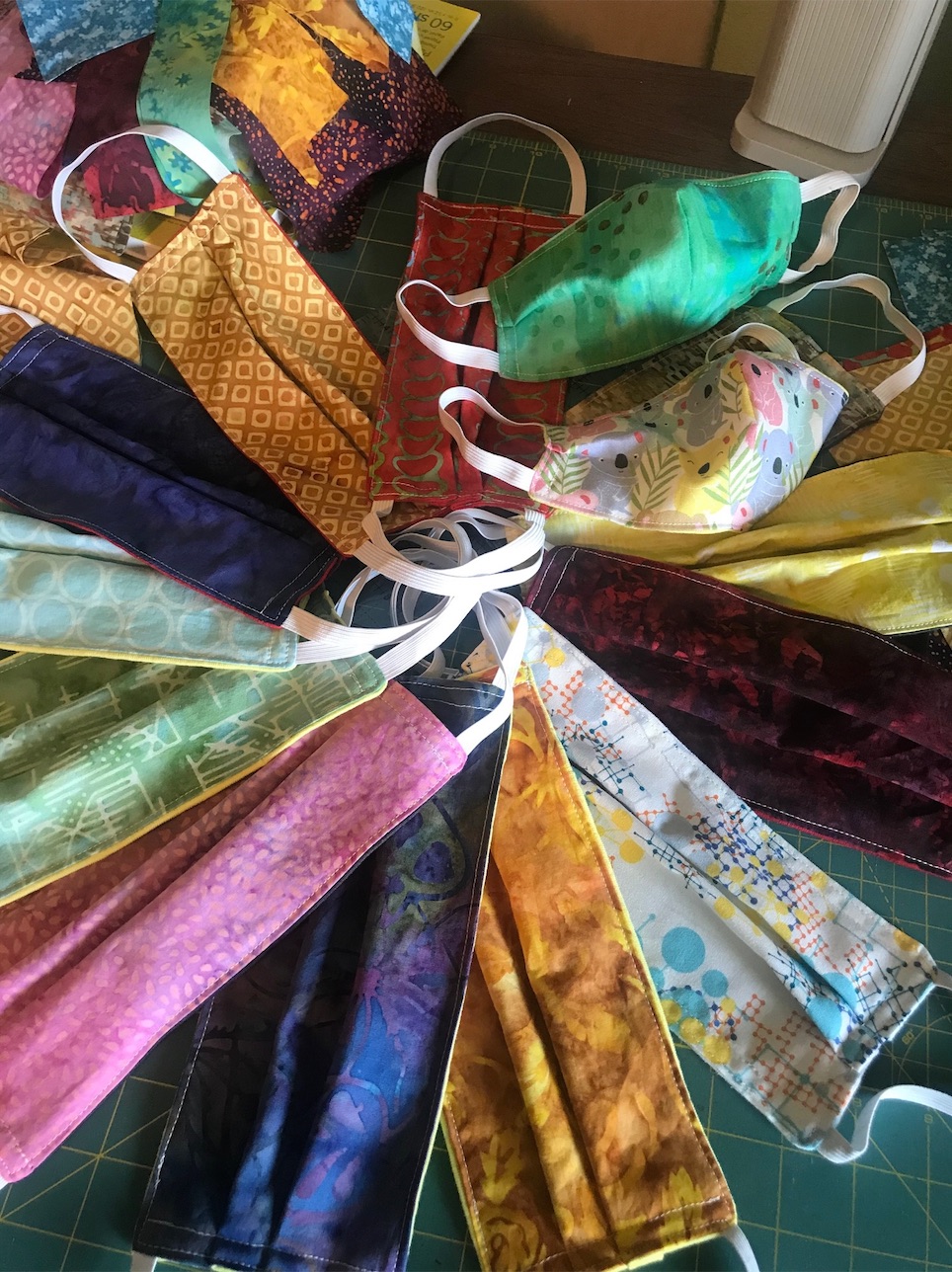I have always enjoyed my classes with Sheila Sinclair Snyder, whose website is License to Quilt. I have made Tuffets and Wooden Quilt Blocks, but when I saw an Instagram post of her making masks for those who need protection from the COVID-19, I reached out for some information. She started making masks for her family...then continued on with masks for those working the front line and has added facilities identified by her local guild.



Here a few ideas from Sheila.
I’ve experimented with a few different styles of fabric masks, in sizes ranging from a small child to adult. I’ve also used a variety of elastics, and ties. All fabrics should be washed prior to making the masks. Each donation site may have further instruction as to whether they should be washed in hot water prior to delivery, or they may choose to send through their own laundry before using.
I know that the more layers included, the better protection, so here’s what I’ve used so far:
- Two layers: Batik fabric (very tight weave) on the outside and a cotton knit as the lining for comfort. Most of these have been with the elastic made to go around the ears. I think they are good for a temporary use, for example answering the door, or going to pick up groceries. They can also be worn over a molded medical mask for extra protection, but in that case ties around the back would be more comfortable for longer periods.
- Three layers: Batik fabric on the outside, a very light woven (iron-on interfacing), and cotton knit lining. An extra layer of protection, still not medical grade. This could possibly provide more protection for the elderly or someone with another condition or illness who is at home. I found that three layers of traditional fabric was most successful when using ties as the elastic application became very bulky and difficult.
- HEPPA filter: Batik fabric on the outside, HEPPA filter in the middle and cotton knit lining. A friend recommended trying this, as the filters claim to be a barrier for pollens, bacteria and virus! We are experimenting to see how they hold up during washing. If it handles well, it might be the closest I can come to a medical grade mask in filtration. It may not conform to the face perfectly, but it may well be much better than nothing for a medical professional. HEPPA filters are made for vacuum cleaners and for furnaces. They generally are accordion pleated, so many can be cut from one filter.
Some ideas to play with and to help out our front line warriors who are helping us fight this virus. Thank you Sheila, you are a perfect example of the spirit that lives in the quilting community!

Stay tuned and travel along with us on Quilt Roadies.




.jpg)



I have been using 3/4” strips of t-shirt material since I ran out of elastic. See videos on YouTube for making t-shirt yarn. I am using that for making my masks with ties now as ties make the mask more adjustable and more comfortable. Just get a t-shirt, a rotary cutter, and start whacking away.
RSS feed for comments to this post